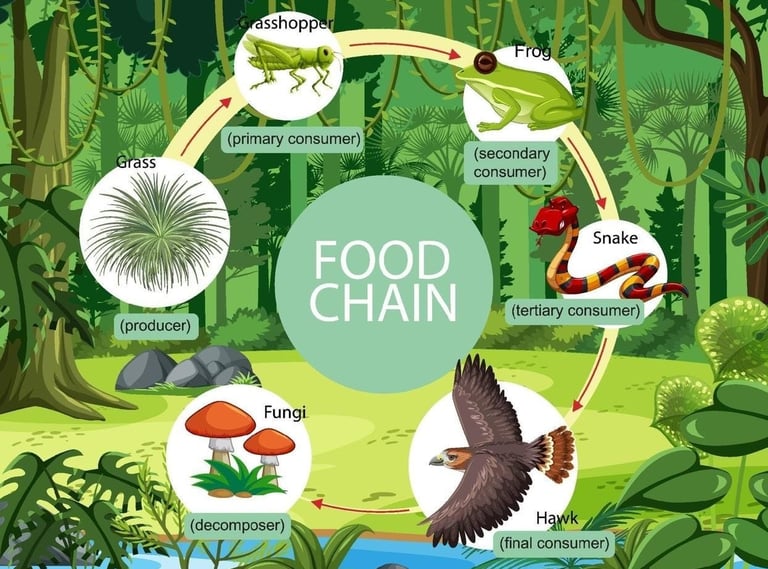The Food Chain
The basic facts about the food chain and the food chains importance.
ENVIRONMENTAL ISSUES
Danny Xu
10/28/20242 min read
The food chain is a representation of which organism eats who in the wild. In the food chain, there are levels known as trophic levels to properly divide all the organisms. Producers take up the first tropic level, consumers take up the second, third, and fourth trophic level, and lastly, the decomposer take up the last and fifth trophic level.
Producers are organisms that produce their own food. These are mainly the plants that exist in a ecosystem and plants are able to make their own food through a process known as "photosynthesis". Plants use the sun's light along with water and carbon dioxide to create glucose for food and oxygen as a byproduct. Even though plants are the most commonly known type of producer, there are still many others out there including all one-celled organisms like phytoplankton and some bacteria.
The next group of the food chain are called the consumers, these are the organisms that consume the producers. However, there are many kinds of consumers. The second trophic level only includes the organisms that are known as herbivores. Herbivores are organisms that only consume plants for food. Herbivores can also be known as primary consumers. Secondary consumers are organism that consume the herbivores or primary consumers. Tertiary consumers consume the secondary consumers. From ecosystem to ecosystem there can be many levels of consumers before the top predator, also known as the apex predator is finally reached. The apex predator, is the consumer that no other organism in the respective ecosystem consumes. Usually, the consumers that are higher up on the list tend to be either carnivores or omnivores. Carnivores are organisms that only eat meat like tigers, lions, and wolfs. Omnivores are organisms like humans that eat both meat and plants like fruits and vegetables.
The final part of the food chain, known as the decomposers, consume things that other organisms have left behind. For example, a dead body or feces. Since decomposers turn organic waste into inorganic material decomposers return nutrients that the producers need which restarts the cycle of the food chain.
Marinating the food chain is very important, a good food chain has a proper balance between the amount of organism in each of the tropic levels. For example, having less carnivores then herbivores is important so that those animals are not eaten and then due to a lack of food overtime, the carnivores also die, however, having to little carnivores leads to the producers like plants to be eaten out. Each food chain in each ecosystem is connected to another organism so each part must be maintained to preserve the overall well-being of the ecosystem. If not, then once one domino falls, the other will fall after it.


